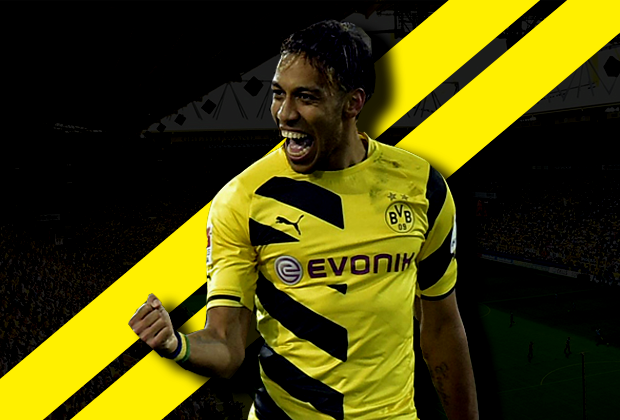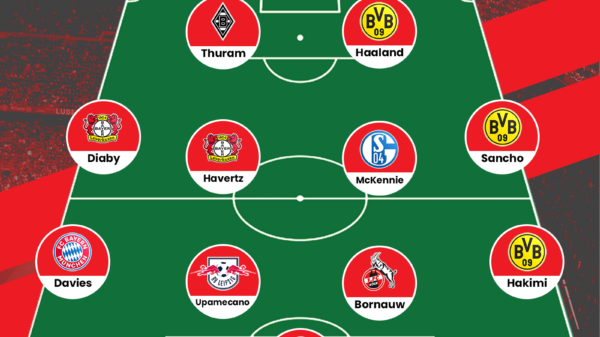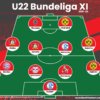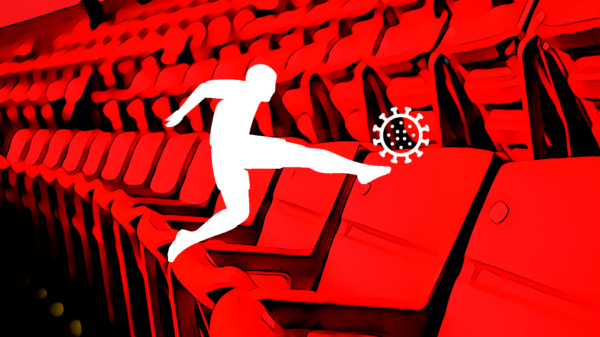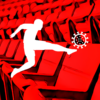Ahead of their Champions League second leg tie against Juventus, Vishal Patel takes an in-depth statistical look at the fall and rise of Borussia Dortmund this season, to pin-point where exactly their faults lie.
Over the last few seasons, the normally very open Bundesliga witnessed the emergence of two rivals competing for the crown. The perennial favourites Bayern Munich were being matched, and even upstaged at times, by the team from the Ruhr, Borussia Dortmund. The side, led by Jurgen Klopp, has carved a niche for itself as almost everyone’s second club. The fast paced, direct football, along with Klopp and his charming bunch of players makes for a heady cocktail not too many can resist. Despite the fact that they kept losing key players, Dortmund managed to find ways to keep themselves relevant and competitive. Except this season.
Chaos
Heading into the 2014-15 season, not too many people expected Dortmund to overcome Bayern and win the League, but nobody could’ve seen them ending up at the bottom of the pile for the winter break. A shocking run of poor results, and inexplicable performances saw Der BVB slip to a new low. The players, fans, and most importantly, Klopp, looked too shell shocked to react, and were at a loss for explanations. So, what really happened to Dortmund?
Comparing their stats from this season, to those from the past two seasons (both of which saw them finishing in second place) should give us some answers.
What shouldn’t come as a surprise are the stats for the goals scored. So far this season, Dortmund have scored at a rate of 1.35 per game, and conceded at the same rate. For a team that currently finds itself in mid table, having recently propelled itself out of the relegation mire, these are not shocking numbers. The conclusions and differences can be arrived at by looking deeper.
1.35 isn’t a very good number to have in the GA column, but it’s only marginally higher than the rate for the past two seasons. Which means that the problem arises with the goals scored. The past 2 seasons saw them scoring at 2.35, and 2.38 goals per game respectively. So obviously, despite injuries, and individual errors, Dortmund have really suffered up front, where they simply haven’t been as lethal as they once were.
The lack of goals could be down to a problem in the supply line, or poor finishing, or a bit of both. Again, a look at the numbers should be informative.
The numbers reveal that there is a definite problem in the supply line. Of the 3 years under consideration, Dortmund attempt about 500 passes a game this season, which is the highest of the 3. However, when it comes to successful passes, 382 per game (this season) isn’t the highest. In fact, the 77% pass completion this season makes it the lowest of the 3 seasons we’re comparing. This may have something to do with the fact that they’re looking to get the ball forward much more i.e. they’re playing more forward passes this season than the previous two. The 337 forward passes, is quite a good number, especially when you consider the fact that it’s an increase of 14 to the previous season. The passes are a lot more risky as well, with many more key passes coming this season, when compared to the previous two. Their average passing length has also become lower (lowest of all 3 years).
All these numbers combined lead to a simple conclusion. While Dortmund are attempting to play the ball forward, and play more killer balls than before, they would probably be better served by doing so in a more direct fashion. The stats indicate that BVB are possibly playing too many passes in the build up phase (large number of passes), and that too many of these are risky (high number of forward passes, and key passes). In order to successfully play such passes, Dortmund would require more men forward, and that would automatically leave fewer men back. Having too many of their players concentrated higher up the pitch would make it very difficult for them to be able to get it up the pitch by passing it, especially if they’re playing it short. They’re a lot more likely to lose the ball in the build up this way. Hence the lack of chances created (12.7 for this season, down by a large margin from the 13.03 last season). This is pretty much corroborated by the figures of Mats Hummels. The German defender had a pass completion rate of 81% last season, but that has dropped to 76% this time around. And this is the man Dortmund often rely upon to play out from deep. Clearly, playing the ball to the frontmen has been a problem area this season. Perhaps this calls for a more careful approach in possession.
In 2012/13, the season they made it to the final of the Champions League, Dortmund had many more backward passes, a much better pass completion rate, and the fewest key passes per game in the 3 years being considered in this article. Surprisingly, it was also their highest scoring season. They got only half the set piece goals that the batch of 13/14 got, and of the 81 goals scored, 72 were from inside the area. The pass length was also at it’s highest. So was this just a team with more talented passers of the football? Or were they a lot more careful in possession, and a lot more considered about when to make the forward pass? From the numbers, it seems that this side was a lot happier to keep the ball when the opportunity to launch into the opponent wasn’t there, and equally, if not more keen, to attack swiftly and directly when the chance presented itself.
This is in contrast to the slightly confused approach of this season. Dortmund, it seems, have been far too keen to get into the opposition’s half. The passing hasn’t been incisive, and indeed, intelligent enough. Forward passes and through passes for the sake of it aren’t the way forward, and they’ve led to a real lack of goals scored by Der BVB.
But are the midfielders and the creative players the only ones to blame for the lack of attacking output? Do the forwards have to take up some portion of the blame too?
The subtraction of Robert Lewandowski from the attack was bound to reduce the potency going forward, but with players like Immobile and Adrian Ramos coming in, many expected Dortmund to cope reasonably enough. But the lack of goals certainly indicates that they haven’t.
The player that has taken on the weight of scoring the goals is Aubameyang. The former St. Ettienne man often starts in the central strikers role, and has been the top scorer for Dortmund this season, with 10 goals in his 23 appearances. Unfortunately for Der BVB, that strike rate is nowhere near Lewandowski’s in his final season. The Pole notched up 20 strikes to end up as the top scorer in the league, at a rate of 0.64 goals per 90 minutes, which is much better than the 0.48 Aubameyang has managed so far this season. It doesn’t even merit comparison to the 0.32, and 0.27 that his intended replacements, Immobile and Ramos have managed. So what did Robert Lewandowski do that the other 3 haven’t done?
First off, he shoots a lot. The number of shots he managed to get off per 90 minutes last season (3.76) are higher than those that the Dortmund trio do this season. While Immobile (3.69) and Aubameyang (3.53) do come close, Ramos’ (2.42) numbers here are significantly lower. When it comes to the percentage of these shots that were on target too, the Lewandowski, Aubameyang, and Immobile are quite close too, with the numbers at 67%, 64% and 67% respectively. So, they’re all shooting often, and a lot of these are on target too. Basically, they’re taking about 4 shots in every 90 minutes that they play, and getting 2-3 on target.
Here’s where the difference emerges. While Lewandowski managed to score 0.67 of these 2-3 on target, the other 2 fall behind with lower goal-to-shot on target percentages. Out of 78 shots on target last season, Lewandowski managed 20 goals, at an impressive 25.64%. In comparison, the same stat for Aubameyang is at 21.28%, and a really poor 12.5% for Immobile.
In defence of Aubameyang though, some of this may have to do with the quality of the chances created too. As mentioned above, Dortmund are creating fewer chances this season, and fewer clear cut ones as well.
Basically, the strikers have underperformed, with the likes of Immobile and Ramos not really pulling their weight just adding to the fact that Lewandowski was a better finisher than Aubameyang. Not surprising really, considering the fact that he is one of the best in world football.
Resurgence
While the first half of the season was really really bad for Dortmund, they have managed to turn it around in recent weeks. So what have they been doing that’s worked? Very simply put, they’ve worked hard on the basics, and identified the key success factors.
Match Day 20-25 has seen them pick up 4 wins, and two draws. They’ve shown improvement and climbed into mid table, with many feeling that they can recognise Dortmund again. Statistically speaking, they’ve taken their possession percentage up by one whole percentage point (which is a fairly large increase over a pretty short span of time), their pass accuracy has also gone up by 1 percentage point, but the most telling increase has come in the shots on target. While match days 1-19 have shown a rate of 43% for shots on target, 20-24 saw them have 52% of their shots on target. The efficiency and sharpness seem to have returned to the side, because while they’ve been creating chances at the same rate, they’ve held on to the ball better, and been a bit more careful in possession. Mats Hummels, who was earlier cited as a key player for the side due to his ability to play out from the back, put in a stand out performance in Dortmund’s stand out performance of the season; the 3-0 win against Schalke. The defender clocked up a completion percentage of 85%, much higher than his season total. The other key player, Aubameyang, has also stepped up his game quite significantly. While his shot accuracy for the season as a whole stands at 64%, over the last 5 games this has increased to 70%. His goals to shots on target ratio too, has climbed. As we identified earlier, this really is the key bit, and Aubameyang has seen his numbers go from 21.28% to an excellent 33%.
Hopefully, for the sake of all the Dortmund well wishers, Jurgen Klopp has found the formula to get Dortmund winning again. The German side will need to keep up the form of the last few games if they are to make a push for European places, and indeed, win their European clash with Juventus.
Majority of stats taken from SportyTrader
Written by Vishal Patel
- Analysis: Are Chelsea’s pressing issues a concern? - October 5, 2020
- Has Financial Fair Play Been Worth It? - August 27, 2020
- Tactical Philosophy: Frank Lampard - May 20, 2020




















































